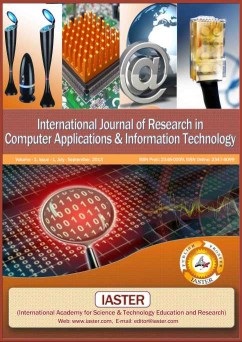CLOUD INFRASTRUCTURE OPTIMIZATION: AN INTEGRATED FRAMEWORK FOR PERFORMANCE, RESILIENCY, RELIABILITY, AND SECURITY ENHANCEMENT
Keywords:
Cloud Infrastructure Optimization, System Resiliency, Cloud Security, Performance Engineering, Infrastructure ReliabilityAbstract
This article presents a comprehensive framework for optimizing cloud infrastructure across four critical dimensions: performance, resiliency, reliability, and security. Drawing from industry case studies and real-world implementations, the article proposes an integrated approach that addresses the challenges faced by organizations in their cloud migration and optimization journeys. The framework incorporates advanced auto-scaling mechanisms, fault-tolerant architectures, predictive analytics, and AI-driven security systems to create robust and future-ready cloud environments. Through examination of successful implementations across major enterprises, the article demonstrates how organizations can leverage this framework to enhance resource utilization, strengthen disaster recovery capabilities, improve service reliability, and fortify security measures. The article suggests that organizations adopting this holistic approach are better positioned to maintain operational excellence while scaling for future growth. The article contributes to both theoretical understanding and practical implementation of cloud infrastructure optimization, providing actionable insights for technology leaders and practitioners in an increasingly complex digital landscape.
References
Jennings, Brendan., & Stadler, Rolf. (2014). Resource Management in Clouds: Survey and Research Challenges. Journal of Network and Systems Management, 23(4), 567-619. doi: 10.1007/s10922-014-9307-71. https://link.springer.com/article/10.1007/s10922-014-9307-7
Mimura Gonzalez, Nelson., Carvalho, Tereza Cristina Melo de Brito., & Miers, Charles Christian. (2017). Cloud resource management: towards efficient execution of large-scale scientific applications and workflows on complex infrastructures. Journal of Cloud Computing, 6:13. doi: 10.1186/s13677-017-0081-42. https://journalofcloudcomputing.springeropen.com/articles/10.1186/s13677-017-0081-4
Bauer, André., Herbst, Nikolas., Spinner, Simon., et al. (2019). Chameleon: A Hybrid, Proactive Auto-Scaling Mechanism on a Level-Playing Field. IEEE Transactions on Parallel and Distributed Systems, 30(4), 813-828. doi: 10.1109/TPDS.2019.2914472. https://ieeexplore.ieee.org/abstract/document/8465991
Mukuhi, David Kule., & Outtagarts, Abdelkader. (2023). Distributed Intelligent Resource Orchestration. 2023 2nd International Conference on 6G Networking (6GNet), 1-8. doi: 10.1109/6GNet.2023.10317732. https://ieeexplore.ieee.org/abstract/document/10317732
Endo, Patricia T., Rodrigues, Moisés., Gonçalves, Glauco E., Kelner, Judith., Sadok, Djamel H., & Curescu, Calin. (2016). High availability in clouds: systematic review and research challenges. Journal of Cloud Computing, 5:16. doi: 10.1186/s13677-016-0066-8. https://journalofcloudcomputing.springeropen.com/articles/10.1186/s13677-016-0066-8
Mushtaq, Sheikh Umar., Sheikh, Sophiya., Idrees, Sheikh Mohammad., & Malla, Parvaz Ahmad. (2024). In-depth analysis of fault tolerant approaches integrated with load balancing and task scheduling. Peer-to-Peer Networking and Applications, 17, 4303-4337. doi: 10.1007/s12083-024-01798-5. https://link.springer.com/article/10.1007/s12083-024-01798-5
Balaji, Mahesh., Rao, G. Subrahmanya VRK., & Kumar, Ch. Aswani. (2014). A Comparative Study of Predictive Models for Cloud Infrastructure Management. IEEE Conference on Computer Communications Workshops (INFOCOM WKSHPS), 37-42. https://ieeexplore.ieee.org/document/6846547
Binu, V., & Gangadhar, N. D. (2015). A Cloud Computing Service Level Agreement Framework with Negotiation and Secure Monitoring. International Conference on Cloud Computing (ICCC), 1-6. https://ieeexplore.ieee.org/document/7015474
Kaur, Jagpreet., Lamba, Shweta., & Saini, Preeti. (2021). Advanced Encryption Standard: Attacks and Current Research Trends. International Conference on Intelligent Technologies (CONIT), 1-6. https://ieeexplore.ieee.org/document/9404716/citations#citations
Sivaselvan, N., Asif, Waqar., Vivekananda, Bhat K., & Rajarajan, Muttukrishnan. (2020). Authentication and Capability-based Access Control: An Integrated Approach for IoT Environment. IEEE International Conference on Advanced Networks and Telecommunications Systems (ANTS), 1-6. https://ieeexplore.ieee.org/abstract/document/9139051
Turner, Richard., Pyster, Arthur., & Pennotti, Michael. (2009). Developing and Validating a Framework for Integrating Systems and Software Engineering. IEEE International Conference on Systems, Man and Cybernetics, 1-6. https://ieeexplore.ieee.org/document/4815836
Deng, Shuiguang., Zhao, Hailiang., Fang, Weijia., et al. (2020). Edge Intelligence: The Confluence of Edge Computing and Artificial Intelligence. IEEE Access, 8, 192309-192322. doi: 10.1109/ACCESS.2020.3020803. https://arxiv.org/pdf/1909.00560
Sodhi, Balwinder., & Kapur, Ritu. (2021). Quantum Computing Platforms: Assessing the Impact on Quality Attributes and SDLC Activities. IEEE Transactions on Artificial Intelligence (TAI), 1(1), 16-29. doi: 10.1109/ICSA51549.2021.00016. https://ieeexplore.ieee.org/abstract/document/9426783

